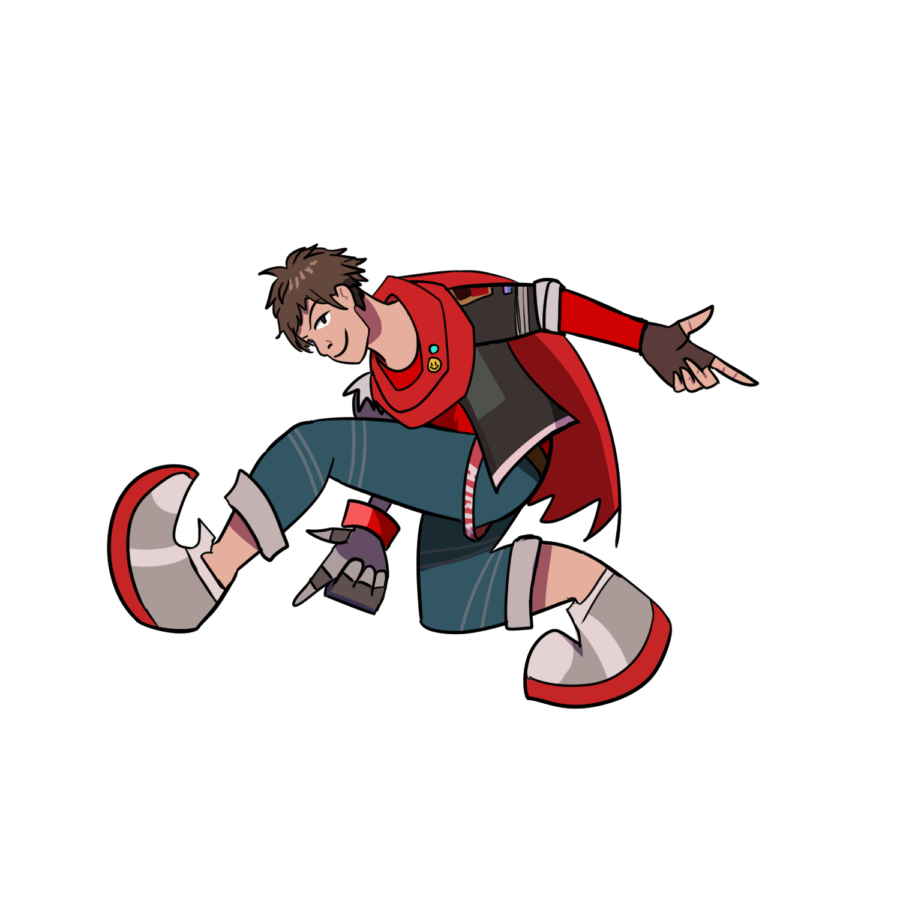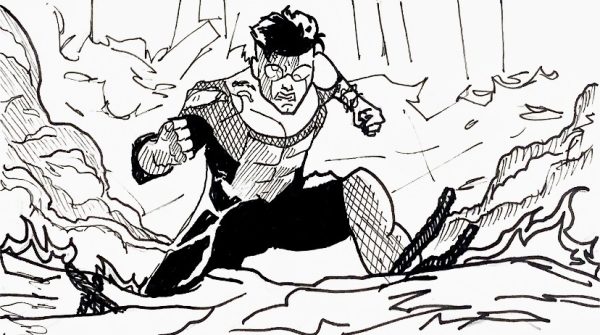“Hi-Fi Rush” is headbangingly good
Tango Gameworks’ new surprise release video game will knock your socks off
Illustrated by Ashley Jay Burdine
Image of Chai, main character of Hi-Fi Rush, doing the classic Sonic Adventure pose, color version
“Hi-Fi Rush” is a 2023 rhythm-based action video game from developer Tango Gameworks (“The Evil Within” series) and publisher Bethesda Softworks (“The Elder Scrolls” series).
The game follows wannabe rockstar Chai, whose MP3 player gets accidentally embedded into his chest during a cybernetic surgery. This allows him to sense the rhythm of the world around him. However, the company behind the procedure has labeled him as a defect and are hell-bent on hunting him down. But with the help of some new friends, Chai goes on a quest to stop the company’s executives and thwart their evil plans.
What immediately intrigued me about this game was that it seemingly materialized out of nowhere. Tango intentionally developed the game in secret, as they weren’t entirely sure how the tone and style of “Hi-Fi Rush” would be received by critics and audiences. While all of their previous games have been relatively offbeat, “The Evil Within” (a violent survival horror game) and “Ghostwire: Tokyo” (a supernatural action game with a dark visual aesthetic) are nowhere near as upbeat or bright as “Hi-Fi Rush.” In fact, they pulled a “Cloverfield Paradox” and released the game on the same day that it was officially announced. Due to this marketing approach, the game has received quite a bit of word-of-mouth acclaim, and understandably so, as “Hi-Fi Rush” is an absurdly fun action game with solid combat, great music, entertaining characters, engaging writing and fantastic visuals.
One of the strongest elements of the game is the soundtrack. When the game was announced, I was already excited to try out a new rhythm game, especially after being somewhat disappointed by last year’s metal first-person shooter game “Metal: Hellsinger.”
But when I read that the tracklist included songs from industrial rock band Nine Inch Nails (“The Downward Spiral,” “The Fragile” and “Bad Witch” are among my all-time favorite albums), I was ready to give Bethesda and Tango all of my money. From that point onwards, I refused to look up the rest of the soundtrack, as I wanted to be surprised. I can’t accurately measure how much joy I felt beating up robots to the beat of the music.
Speaking of beating up robots, the game’s combat is really energetic. Practically everything in the game is synced up to whatever song is playing. During combat, Chai has to attack, evade and execute combos on beat. While executing all of these properly can be difficult to do, it’s pretty satisfying to destroy enemies when the music swells.
“Hi-Fi Rush” also has solid writing. Chai and the side characters are all engaging to either play as or watch, and the plot is pretty entertaining as well. Most of the plot is basic, but that isn’t a bad thing. If anything, having a relatively simple plot can leave room for the player to get invested in other elements of the gameplay, which this game does to fantastic effect.
Probably the most distinct element of this game is its tone and style, especially when compared to other Tango Gameworks projects. While those borrow a lot from horror, this has more in common with anime, “Portal,” “Persona” and “Spider-Man: Into the Spider-Verse.” It’s hard to play this game and remember that it’s from the same game director as “The Evil Within 2.” But fortune favors the bold, and this strong departure gave the developers a lot of room to experiment and just have fun, which is clear in the vibrant color and beautiful design present throughout the game.
Overall, “Hi-Fi Rush” is a great way to start this new year of gaming. It has beautiful visuals, fun writing, engaging combat and a fantastic soundtrack. It’s just a fun game to play, and I honestly can’t think of a single person I wouldn’t recommend this to.
RATING: 9/10 (14 hours; played on PC)

Hey guys! My name is Om Dighe, and I'm an arts columnist specializing mainly in movies, television and video games. I'm from Spring, Texas, and I'm a...











